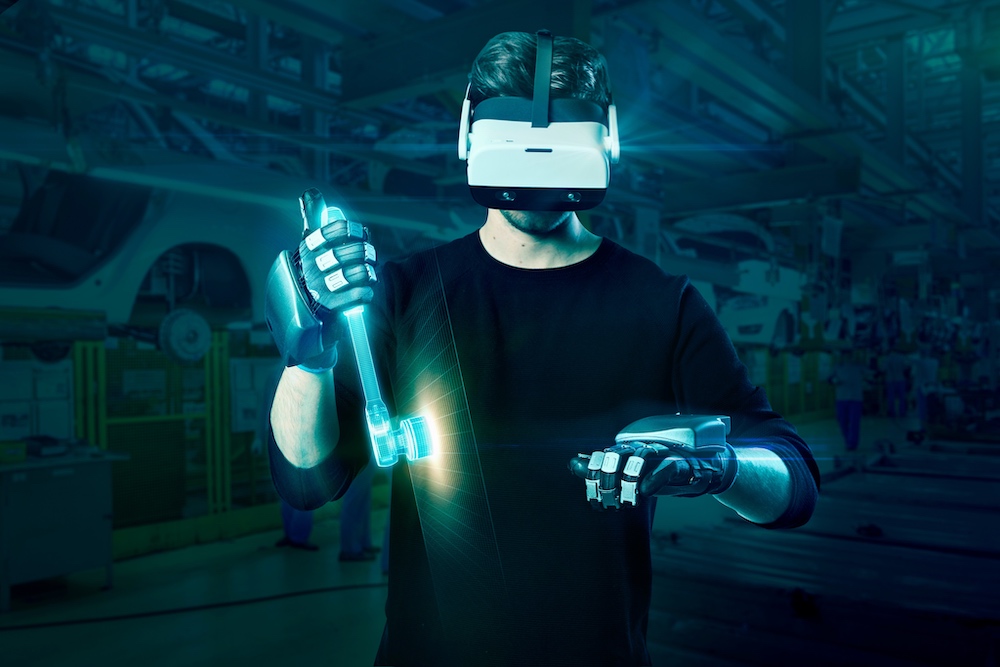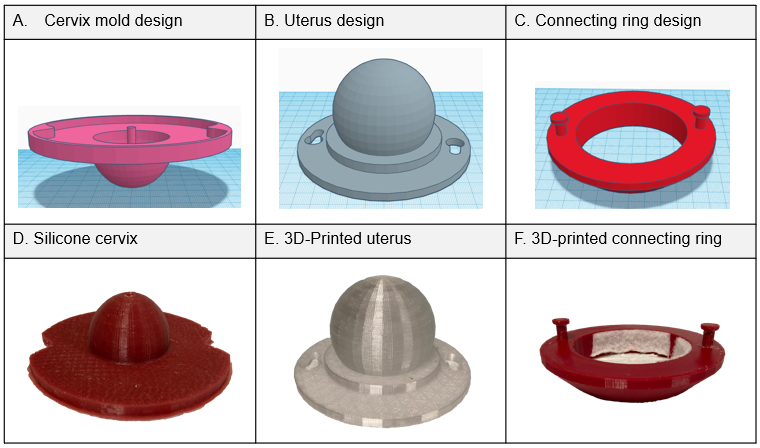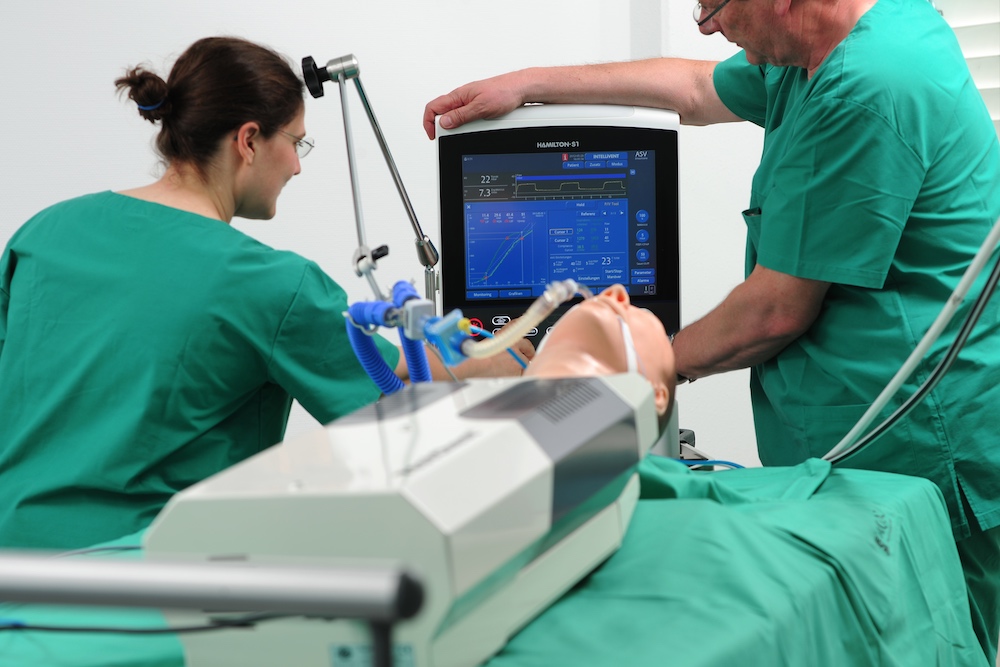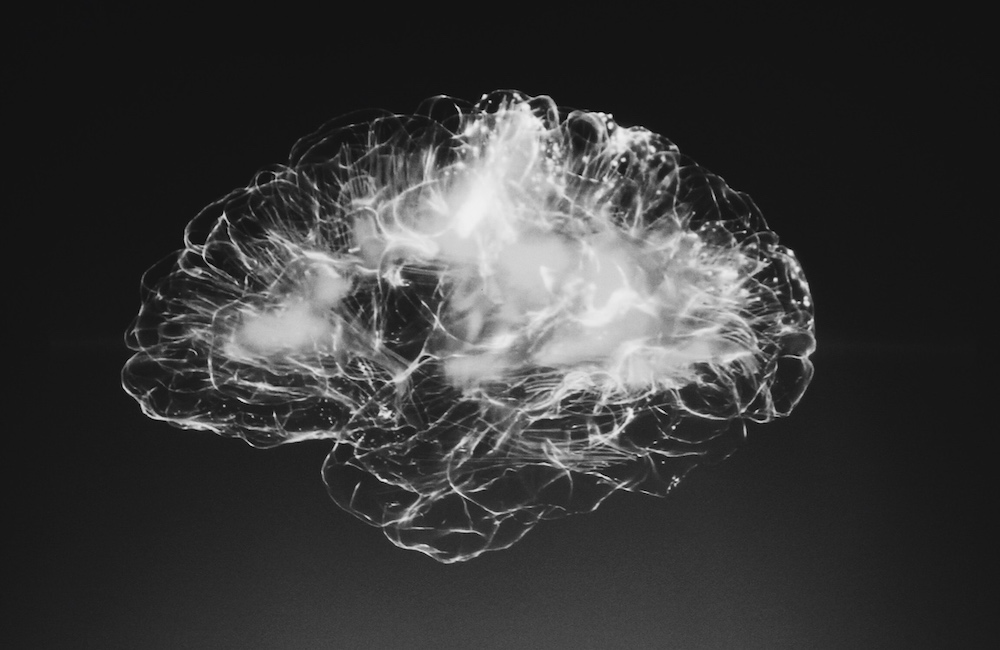Haptic VR gloves enable the wearer to reach out and “touch” their virtual reality experience through simulated feeling. This new type of wearable device can be used within the field of healthcare simulation to empower learners to better connect to the tactile feeling of their clinical experience, whether it is the pressure of bone in a surgical simulation or the pressure of the skin for palpation. By using haptic gloves, learners are able to better interact with their virtual environment around them, going beyond sight and sound to touch as well! Although a new technology with lots of room for continued development, clinical simulation champions should absolutely consider how Haptic gloves will be part of the future of medical simulation technologies!
Being immersed in a VR scenario can certainly help learners experience the most high-fidelity training experiences to improve their skills and increase patient safety outcomes. But what about the sensation of touch? To simulate tactile sensations of virtual objects, some haptic VR gloves work by measuring finger extension through a series of fiber-optic cables. When light passes through the cables from a sensor, the sensor will adjust depending on how the user’s fingers are positioned. For example, if the user makes a fist, less light will enter the sensor, inducing a response from the VR system.
Often calibrated to work with a specific user’s dimensions, other haptic VR gloves respond to electronically conductive ink that changes electronic resistance based on user movement. A central processing unit will interpret changes in electronic resistance and respond in a specific way. While this method of utilizing haptic gloves may be less precise than the fiber-optic alternative, these products tend to be more cost effective.
Another use of haptic VR gloves is to provide tactile feedback of virtual objects. The haptic feedback embedded in VR gloves can be realized by imparting a resistive force on the finger joints. The tactile sensation created when a user holds a virtual object is then translated to the computer in the form of data. These data can include feedback backed on a virtual object’s weight, size, temperature and more to depict virtual reality scenarios. This technology helps to bridge the gap between the digital and real worlds.
Examples of Haptic VR Gloves
SenseGlove: SenseGlove is helping to pave the way toward the future of VR training with updated force-feedback gloves made to be donned in five seconds. The company’s haptic VR glove, SenseGlove Nova, features an updated flexible form-factor in combination with unparalleled haptic technologies and smooth hand tracking. This allows users to feel shapes, textures, stiffness, impacts and resistance in virtual reality more easily than ever before. With SenseGlove, digital objects feel real.
SenseGlove’s patented force-feedback system puts out 20 Newtons of resistance within 10 ms, making digital objects feel like their real-life counterparts. This makes SenseGlove Nova perfectly suited for VR training. Developed in collaboration with SenseGlove research customers, the company ensures that the product includes all features required for VR training. This product’s technology has been tested for training and research applications by industry leaders, such as those in clinical simulation.
HaptX: HaptX Gloves DK2 brings true-contact VR haptics to enterprising customers working in virtual reality and robotics. The patented technology displaces a user’s skin the same way a real object would. With 133 points of tactile feedback per hand, HaptX Gloves DK2 achieves a high level of realism. The proprietary magnetic motion capture system tracks 30 DoF per hand with sub-millimeter precision, no occlusion and no perceivable latency. Lightweight extend-ons also apply up to 40 lbs. (175 N) of resistive force per hand.
With the HaptX Gloves D2K, users can roam freely through room-scale VR with full-body avatars featuring accurate inverse kinematics. They can also collaborate in real-time from anywhere in the world with multi-user haptic VR experiences. Whether a learner is training in their workforce, designing a new product or controlling robots from a distance, HaptX Gloves make their experiences feel authentic.
Cornell University: Researchers at Cornell University, led by Rob Shepherd, associate professor of mechanical and aerospace engineering in the College of Engineering, created a fiber-optic sensor. This haptic VR sensor combines low-cost LEDs and dyes and results in a stretchable “skin” that detects deformations such as pressure, bending and strain. According to the university, the original goal of the project was to make a haptic lightsaber (virtual sword). Yet, due to time and budget constraints, the project became too overwhelming and the researchers settled for a “much humbler glove.”
By the completion of this project, researchers determined that they could not get the gravity simulation to work and that the solenoid motor was too weak to function consistently. However, the visual feedback on Matlab exceeded their expectations. The researchers explained that if they were to do this project again, they would have put more thought into planning out the design of the glove. They would have also considered what kind of glove they needed, and where to mount the parts for optimal performance. Overall, they believe that more research regarding the design of the project and its components are needed before they decide to implement them.
VRgluv: The VRgluv ENTERPRISE haptic gloves give learners full control of their hands in VR, unlocking a wide variety of new interactions, experiences and gestures. These help the learner feel like they’re immersed in the simulated experience thanks to patented force feedback technology. VRgluv’s hand and finger tracking technology provides accurate and reliable motion capture experiences, and the patented tracking system does not suffer from drift or occlusion. The solution is easily calibrated to the user’s hands in less than 30 seconds, and each finger features 3 DoF tracking that includes finger splay and individual joint motion capture.
Teslasuit: The TESLASUIT GLOVE can be used together with the company’s haptic suit or separately. The compatible VR gloves integrate haptics, motion capture, biometry and force feedback. The product also has a range of breakthrough applications, from enterprise XR-training to rehabilitation and much more. Haptics, equipped with a 3×3 display for each finger, contributes to tactile sense, enabling users to feel virtual textures as though they were genuine.
The GLOVE can detect the movements of the user’s hands and use them to control the accuracy of movements. It’s the perfect feature to use if fine motor skills are required. Additionally, the finely honed exoskeleton element, together with the motion capture and force feedback systems, helps users find their application in robotic telecontrol systems as well as medical rehabilitation. Further, the integrated biometric system gathers real-time data while in use – allowing for emotional state, stress level and heart rate to be relayed.









